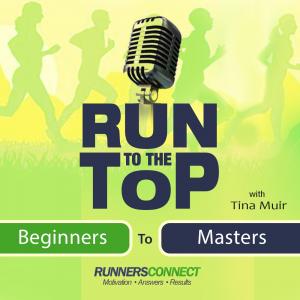
chats with Running Influencers, Researchers, Olympians, Experts & Everyday Runners
Health:Fitness & Nutrition

Today I am excited to welcome Max Prokopy to the show. Max has his masters degree in exercise physiology and a member of the UVA Speed Clinic. At the Speed Clinic they help people runners and walkers optimize their gait to remain injury free and increase their performance. Max and his team have helped both elite level runners to age groupers, and from age 10 to 80 come through their 2.5 hour evaluation process.
When you arrive at the clinic you will run a little, watch a lot of video, and perform a battery of examinations to gauge your current abilities. After this thorough examination you’ll have not only a grasp on where you can improve, but precise instruction on how to improve that form in your daily running.
This includes a 3-D representation of your running from the sensors placed on your body during the testing, along with another dozen pages of charts, graphs, and detailed instruction on what your “homework” is after you leave the clinic.
The beauty of the Speed Clinic is that it’s not just for the injury prone runners, but for runners at any level who want to improve their performance. The key to getting the most out of your visit, regardless of where you are in your running, is to have an open mind to the information you’ll learn there, and how long it will take to implement.
One of the most common questions that Max gets is whether orthotics are a good thing for runners. This is a tough topic and one that is tough to nail down with a concrete answer. As running is a dynamic activity and the fitting of it is static, monitoring of an orthotic must be done over time, and incremental changes should be made over this time. This can be a process that takes up to a couple of months and is a process you should go through with the fitter of your orthotic.
Other topics we discuss are:
- What the UVA Speed Clinic is all about and what you can expect in a visit there
- Why running form is so important for performance and injury prevention
- The benefits and drawbacks of Orthotics
- When Motion Control shoes are necessary and when runners should go Minimal
- DNS - Dynamic Neuromuscular Stabilization
Max says that the most common gait faults in his examinations include things that can be adjusted in your daily life. Tight ankles, tight hip flexors, and weak buttocks are often the result of these environmental factors impacting your running form in the end.
If you’re not able to make it to UVA, you can do a quick self assessment yourself (one straight on and one from the side), be sure to look at:
- Your posture - Is it vertical or are there a lot of curves and kinks?
- Footstrike - is it straight below you or out in front?
- Midstance - are your arms hanging out, are you balanced at this point in your gait?
More Episodes
 2012-11-13
2012-11-13
 2.5k
2.5k
 2012-09-18
2012-09-18
 7.3k
7.3k
 2012-09-05
2012-09-05
 3.1k
3.1k
 2012-07-09
2012-07-09
 1.8k
1.8k
Create your
podcast in
minutes
- Full-featured podcast site
- Unlimited storage and bandwidth
- Comprehensive podcast stats
- Distribute to Apple Podcasts, Spotify, and more
- Make money with your podcast
It is Free
- Privacy Policy
- Cookie Policy
- Terms of Use
- Consent Preferences
- Copyright © 2015-2024 Podbean.com



